Making Wine with Fresh Chilean Juice or Must this Spring?

Then why not add in a pail of frozen juice or must from Wine Grapes Direct?
We’ve got premium frozen grape juice and must for sale year round that is proudly sourced from the finest wine growers on the West Coast. Knowing where your fruit comes from is an essential part of your wine’s story which is why we strive to connect you with the people and places that grow our grapes. So since you’ve already cleaned out your fermentors and carboys for your fresh Chilean Carmenere juice from M and M Wine grapes or your fresh Chilean Sauvignon Blanc juice from Presque Isle Wine Cellars, be sure to also make space for a batch of Chenin Blanc from Clarksburg or a Sonoma Merlot.
SHOP NOW:
Each pail includes 5 gallons of grape must
Product will arrive partially frozen.
Rutherford AVA, Napa Valley, CA
Brix: 25.2 , pH: 3.81 , TA: 3.6 , YAN: 100 mg/L
(Full ETS Lab Report in photos)
Harvested and destemmed: October 13th
2025 Alsace Vineyard Petit Verdot
A Rare Expression from Rutherford’s Alsace Vineyard
From Rutherford’s acclaimed Alsace Vineyard — where wines have earned up to 99 points from Wine Spectator and 97 from Robert Parker — this limited release offers a rare opportunity to work with fruit from one of Napa Valley’s most distinguished vineyards.
The Vineyard
Nestled along the eastern side of Napa Valley just north of Oakville and bordering the Silverado Trail, Alsace Vineyard stands as a cornerstone of Rutherford’s legendary terroir.
Here, red and brown gravelly loam soils with excellent drainage meet warm afternoon sun and cool nighttime air, yielding small, intensely flavored berries with remarkable concentration and balance. The result: fruit that captures Rutherford’s hallmark “dusty” elegance and polished texture vintage after vintage.
Farming & Clone
Planted in 2009 and managed by Garvey Vineyard Management under sustainable, fish-friendly practices, the ENT400 Petit Verdot clone thrives in this site’s ideal microclimate. Loose, open clusters and small, thick-skinned berries deliver exceptional color density and layered aromatics.
Precise canopy management ensures even ripening and vibrant natural acidity, while balanced sunlight exposure creates structure without harshness — a hallmark of expertly farmed Rutherford fruit.
Flavor Profile
This Rutherford Petit Verdot produces a deeply saturated, dark-hued must with compelling aromatic intensity. Expect primary notes of dark cherry and dark chocolate, framed by a vivid violet tone distinctive to the ENT400 clone.
Firm yet polished tannins and bright acidity provide the backbone for wines that are complex, concentrated, and elegant — suitable for blending or as a powerful standalone expression.
Subtle graphite and classic Rutherford dust linger on the finish, uniting fruit, spice, and minerality in a seamless expression of place.
Highlights
• Vineyard: Alsace Vineyard, Rutherford AVA, Napa Valley
• Varietal: Petit Verdot (Clone ENT400)
• Planted: 2009
• Soils: Red and brown gravelly loam with excellent drainage
• Farming: Sustainable and fish-friendly, managed by Garvey Vineyard Management
• Critical pedigree: Wines from this vineyard have earned up to 99 points (Wine Spectator) and 97 points (Robert Parker)
• Retail comparison: Finished wines from this vineyard retail for $64/bottle
Extremely limited. Singular to Rutherford.
Provenance Note: This product is made from fruit sourced from Alsace Vineyard in Rutherford, Napa Valley. The vineyard name is used here for factual origin reference only and does not imply endorsement or affiliation.
Each pail includes 5 gallons of grape must
Product will arrive partially frozen.
Calistoga AVA, Napa Valley, CA
Clone 7:
Brix: 23.5 , pH: 3.95 , TA: 2.8 , YAN: 66 mg/L
Clone 337:
Brix: 23.3 , pH: 3.83 , TA: 2.9 , YAN: 60 mg/L
(Full ETS Lab Report in photos)
Photos coming soon — we’re working directly with the vineyard team to provide approved imagery.
Harvested and destemmed: TBD
A Hidden Gem of Northern Napa
Known to insiders as “The Calistoga,” this single-vineyard Cabernet Sauvignon comes from a confidential northern Napa site whose fruit is prized by leading wineries, with finished bottles retailing for up to $170 each. Its reputation for a dark, layered Cabernet with Calistoga power and a mineral spine has made it one of the most sought-after vineyard sources in the valley.
Climate & Vintage Character
Planted in early 2000s on volcanic benchland soils, this vineyard rises between close to 600 feet in elevation. The gravelly and cobbly loam terrain provides perfect drainage while holding a whisper of subsurface moisture from the nearby hills. The result is fruit of remarkable concentration, depth, and natural balance.
Clonal Composition
Two limited blocks are offered this year, each expressing a different facet of the site’s character:
Clone 7 (CS7)
→ Delivers the classic Napa backbone: deep color, cassis, and firm, age-worthy tannins.
Clone 337 (CS337)
→ Brings perfume and precision: violet, plum, graphite, and silky texture.
Together, they form a Cabernet that marries power with finesse, showing dark fruit, cocoa, and a lingering mineral finish emblematic of northern Napa’s volcanic benchlands.
Highlights
Calistoga AVA volcanic benchland terroir
Sustainable, fish-friendly farming practices
Balanced blend of Clone 7 and Clone 337 Cabernet Sauvignon
Cool 2025 vintage with lifted aromatics and refined structure
Single-vineyard Napa fruit sourced from a confidential, world-class site
Photos coming soon — we’re working directly with the vineyard team to provide approved imagery.
Extremely limited. Singular to Calistoga.
Each pail includes 5.25 gallons of grape juice
Product will arrive partially frozen
Sonoma Coast AVA, Sonoma Valley, CA
Brix: 24.1 , pH: 3.68 , TA: 4.8 g/L , YAN: 215 mg/L
(Full ETS Lab Report in photos or simply CLICK HERE)
Harvest September 26th, 2025
Durell Vineyard - Planted 1980-1990
Durell Vineyard is one of the crown jewels of Sonoma Chardonnay, where the borders of Sonoma Coast, Sonoma Valley, and Carneros meet. First planted in 1979, the vineyard’s 160 acres of vines draw from a rich mosaic of soils — gravelly Los Robles in the flats, cobbly Tuscan and Goulding loams on the slopes, with pockets of Clear Lake clay in between. Winds from the Pacific and San Pablo Bay temper the valley warmth, stretching the season and creating fruit of both richness and lift.
This release is a true dual expression of Durell Chardonnay, composed in equal parts from Clone 95 and the rare Rued selection. The two were harvested at different ripeness levels — one at higher Brix, one at lower — layering ripe, concentrated flavors over fresh, vibrant tones. Clone 95 contributes depth and texture, with fig, dried fruit, and a broad mouthfeel accented by flinty minerality. Rued brings an aromatic lift of floral notes, stone fruit, and subtle muscat-like tropicality. Grown on contrasting soils, elevations, and sun exposures, the two clones come together to produce a wine that is at once powerful and precise: ripe yet bright, complex yet balanced, finishing with energy and elegance.
Access to fruit of this caliber is a rarity. Durell supplies some of California’s most prestigious Chardonnay producers — names like Three Sticks, DeLoach, Kistler, Sojourn, Scribe, Dunstan, La Crema, Banshee, and Auteur — whose wines from this vineyard retail from $50 to $180 per bottle. To secure frozen juice from Durell is to step directly into that lineage, if only for a brief season. Extremely limited. Singular to Durell.
Each pail includes 5 gallons of grape must
Product will arrive partially frozen.
Contra Costa County, California
Brix: 24.6 , pH: 3.46 , TA: NA g/L , YAN: NA mg/L
Harvested September 11th, 2025
Planted in 1888 [with Grenache from 2005]
Born of necessity and heritage, this year’s release comes as a true field blend. Originally destined to be bottled as a rare Palomino, lower yields from those historic vines led us to unite the ancient vine Carignan, Mourvèdre, Alicante Bouschet, and Palomino with a portion of Grenache planted in 2005. Together they create a layered snapshot of Sandy Lane Vineyard’s living history.
All but the Grenache trace back to 1888: own-rooted, head-trained, dry-farmed vines thriving in forty-foot-deep granitic sands just east of the San Francisco Bay. This vintage also includes the last pressings from harvest — the final, juice-rich fractions of the crush — making these buckets extra generous, with notably high yields for winemakers.
Palomino’s Role
Palomino, though a white grape, adds an essential dimension to the blend. Its naturally high acidity brings brightness and lift, while subtle notes of citrus, almond, and hay weave in sweetness and aromatic complexity. This “acid bomb” quality harks back to how wines were traditionally made when the vineyard was first planted in the late 1800s — blending Palomino with red varieties to create field wines of freshness, balance, and longevity. In many ways, this field blend carries forward the vineyard’s original intent.
Style & Expectation
The resulting wine will echo the character of Southern Rhône blends, with a kinship to rustic Mediterranean reds of Italy: dark fruit wrapped in savory earth, spice, and supple texture. Expect robust aromatics, juicy depth, and a structure that balances power with approachability — sharpened and lifted by Palomino’s zesty acidity.
Quantities are extremely limited, but the story is expansive — a blend of 19th-century vines and modern additions, carrying forward the heritage of Contra Costa’s ancient vineyards.
This vineyard shares a fence line with Evangelho, now farmed by Bedrock Wine Co., and has been used by Ridge Vineyards and other top producers. These are true California heritage vines—enduring, expressive, and deeply rooted in the history of West Coast winemaking.
Quantities are extremely limited.
Each pail includes 5 gallons of grape must
Product will arrive partially frozen.
Contra Costa County, California
Brix: 24.6 , pH: 3.80 , TA: 3.3 g/L , YAN: NA mg/L
(Just click through photos for ETS Lab Report or CLICK HERE)
Harvested September 11th, 2025
Planted in 2005
Sandy Lane Vineyard is renowned for its ancient vines—own-rooted, head-trained, and dry-farmed plantings that date back to 1888. These historic vines grow in forty-foot-deep granitic beach sand along the Sacramento River Delta, where steady Delta breezes shape wines of purity, depth, and a true sense of place.
The Grenache block offered here is the one exception. Rather than being from the 1880s, it was replanted in 2005 after yield declines in the original vines. Even so, it shares the same soils, exposure, and dry-farming practices as the old blocks. The result is Grenache that carries Sandy Lane’s unmistakable character—fine-grained tannins, brightness, and concentration—expressed through the vigor of younger vines.
Expect lifted aromatics and flavors of wild strawberry, red plum, white pepper, dried herbs, and subtle earthiness. The sandy soils bring a transparent structure, while the younger vine age adds freshness and approachability. It’s not “ancient vine” in age, but it’s very much Sandy Lane in spirit.
Sandy Lane borders the famed Evangelho Vineyard (now farmed by Bedrock Wine Co.) and has supplied fruit to Ridge Vineyards and other top producers. This Grenache represents a rare opportunity to explore a newer planting within a legendary vineyard.
Quantities are extremely limited.
Each pail includes 5 gallons of grape must
Product will arrive partially frozen.
Contra Costa County, California
Brix: 25.8 , pH: 3.66 , TA: 3.5 g/L , YAN: 107 mg/L
(Just click through photos for ETS Lab Report or CLICK HERE)
Harvested September 11th, 2025
Planted in 1888
Sandy Lane Vineyard, located in Contra Costa County, is a rare and remarkable site—own-rooted, head-trained, dry-farmed vines planted in 1888 grow in deep Delhi sandy loam just feet from the Sacramento River Delta. These soils are inhospitable to phylloxera, which is why the original vines are still alive and producing fruit today—an increasingly rare phenomenon in California or anywhere else in the world.
Mourvèdre from this vineyard has gained a reputation for its depth, structure, and signature savory edge. While the grape is often blended, single-varietal bottlings from Sandy Lane have shown distinctive notes of boysenberry, black fruit, sage, lavender, forest floor, and dried herbs, with a naturally firm tannic backbone and persistent finish. The fruit carries the unmistakable imprint of its place: old vines, wind-swept sand, and a slow, deliberate growing season shaped by the Delta breeze.
This vineyard shares a fence line with Evangelho, now farmed by Bedrock Wine Co., and has been used by Ridge Vineyards and other top producers. These are true California heritage vines—enduring, expressive, and deeply rooted in the history of West Coast winemaking.
Quantities are extremely limited.
Each pail includes 5 gallons of grape must
Product will arrive partially frozen.
Contra Costa County, California
Brix: 26.5 , pH: 3.59 , TA: 4.9 g/L , YAN: NA mg/L, Ammonia: 56 mg/L
(Just click through photos for ETS Lab Report or CLICK HERE)
Harvested September 11th, 2025
Planted in 1888
Alicante Bouschet is a powerhouse red grape—and a true rarity in the world of vitis vinifera. As a teinturier varietal, its flesh is red, not just the skin, producing incredibly dark, deeply pigmented wines with intense structure and richness.
Sourced from own-rooted, dry-farmed, head-trained vines planted in 1888 at Sandy Lane Vineyard in Contra Costa County, this Alicante Bouschet is as historic as it is bold. The vineyard’s Delhi sandy loam soils, paired with daily cooling Delta breezes, allow the fruit to ripen fully while retaining freshness—a key to balance in a grape known for its density.
Historically, Alicante earned its reputation during Prohibition, when its thick skins and inky juice made it ideal for shipping cross-country to East Coast bootleggers. Today, in the hands of passionate winemakers, it produces full-bodied, tannic reds with aromas of dark chocolate, roasted plum, and crushed rock, and can be built to age or blended to add depth and color.
Bedrock Wine Co. farms the neighboring Evangelho Vineyard, just next door, and Ridge Vineyards has produced bottlings from this exact site—further affirming the pedigree of this small, sandy patch of Contra Costa history.
Expect inky black wines with structure, concentration, and enduring character. A rare offering from a legendary site.
Each pail includes 5 gallons of grape must
Product will arrive partially frozen.
Contra Costa County, California
Brix: 26.2 , pH: 3.77 , TA: 3.5 g/L , YAN: 99 mg/L
(Just click through photos for ETS Lab Report or CLICK HERE)
Harvested September 11th, 2025
Planted in 1888
Just east of the San Francisco Bay, nestled in the granitic beach sands of Contra Costa County, lies Sandy Lane Vineyard—a living relic of California’s earliest winegrowing history. Planted in 1888, these own-rooted, head-trained, dry-farmed vines have endured for well over a century—defying phylloxera thanks to the vineyard’s deep, sandy soils, which create a hostile environment for the root louse. Very few own-rooted vineyards of this age remain in California, or anywhere in the world.
This is our first year offering Carignan from Sandy Lane, and we couldn’t be more excited. The fruit from these ancient vines produces wines that are deeply colored, texturally rich, and bursting with flavors of bramble fruit, spice, dried herbs, and savory minerality.
Ridge Vineyards has worked with this vineyard in the past, and Bedrock Wine Co. currently owns and farms the neighboring Evangelho Vineyard, just next door—a vineyard with nearly identical growing conditions.
Sandy Lane is planted in Delhi Sandy Loam, a soil that looks and feels like beach sand. Afternoon Delta breezes act as natural air conditioning for the vines, moderating the warm growing days and preserving natural acidity. Combined with dry farming and own-rooted vines, this site yields fruit of remarkable concentration, structure, and aromatic lift.
This is a rare opportunity to ferment history. Quantities are extremely limited.
Each pail includes 5 gallons of grape must
Product will arrive partially frozen.
Lodi, California
Brix: 24.3 , pH:3.60 , TA: 5.8 g/ L, YAN: 216 mg/ L
Full ETS Lab Report in Photos
Harvested October 3rd , 2023
Planted in 1906
After almost a decade of working with the Van Ruiten family, they’ve finally let us have a few tons of fruit from their oldest Zinfandel planting. This Ancient Vine Zinfandel was planted in 1906. It’s dry farmed, self rooted and yielding less than 1 ton per acre. Wines from this vineyard usually express those rustic old vine flavors of dried plum, sage, and star anise.
“Lying directly east of the largest gap in California’s Coast Ranges – the San Francisco Bay – Lodi experiences a Mediterranean climate characterized by warm, dry summers and cool, wet winters. During the growing season, warm, sunny days allow for optimal ripening of winegrapes. By contrast, cool winds off the Pacific Ocean which travel inland over a network of waterways act a natural air conditioner for the region, helping winegrapes maintain racy acidity. Together, geography and climate provide Lodi the unique ability to grow an unusually diverse range of winegrapes. Though Lodi is sometimes perceived as a hot-climate region, in reality, average temperatures are comparable to or even lower than other well-known regions like Healdsburg (Sonoma), St. Helena (Napa Valley), and Paso Robles."
“Lodi’s diverse soils were formed thousands of years ago through geological events and alluvial waters. Two major rivers originating in the Sierra Nevada–the Mokelumne and Cosumnes—have brought soils rich in granitic-based minerals that complement the fine sandy loam soils surrounding the community of Lodi. Recent expansion has driven vineyards into previously undeveloped areas along the eastern edge of the appellation where a range of older lower fertility soils are found; these ideal winegrowing soils range from heavier clay-based soils in the south to well-drained stony soils in the north. A few of the more dominant soils in the region include Tokay Fine Sandy Loam, Tuscan Stony Loam, San Joaquin Loam, and Archerdale Clay Loam. The fine, well-draining Tokay Sandy Loam is home to the majority of Lodi's fifty- to one hundred-year-old Zinfandel vines.”


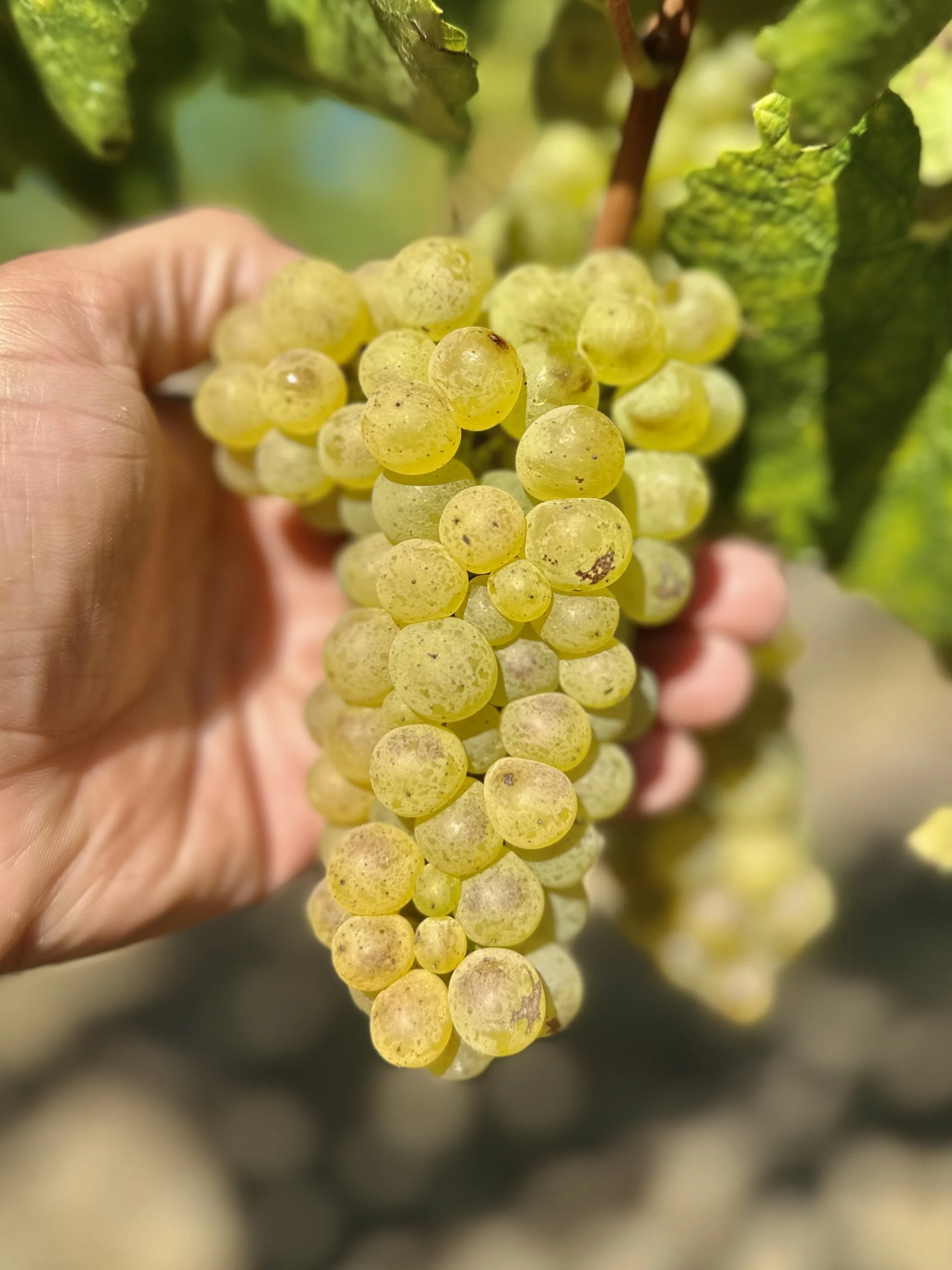
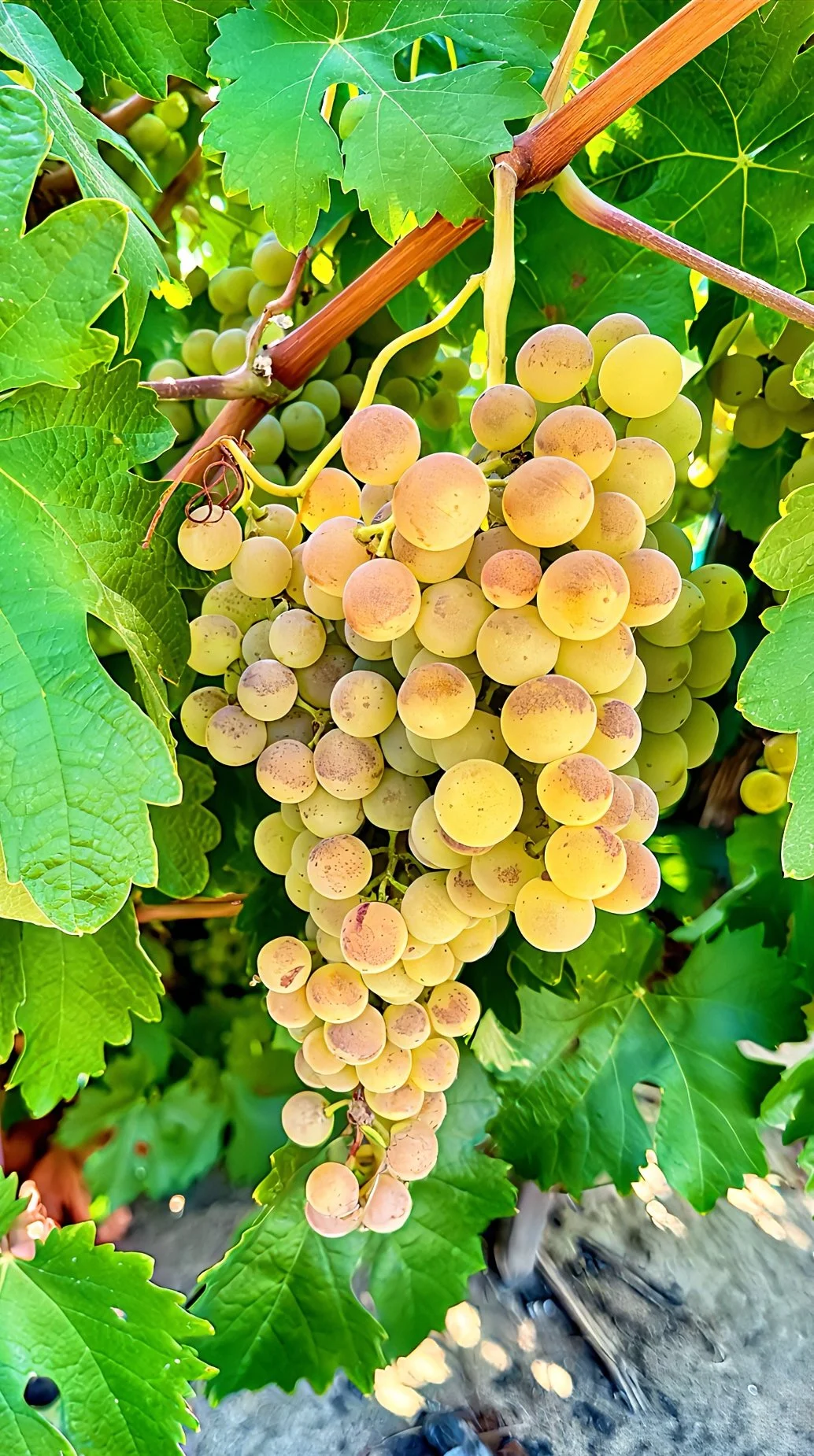
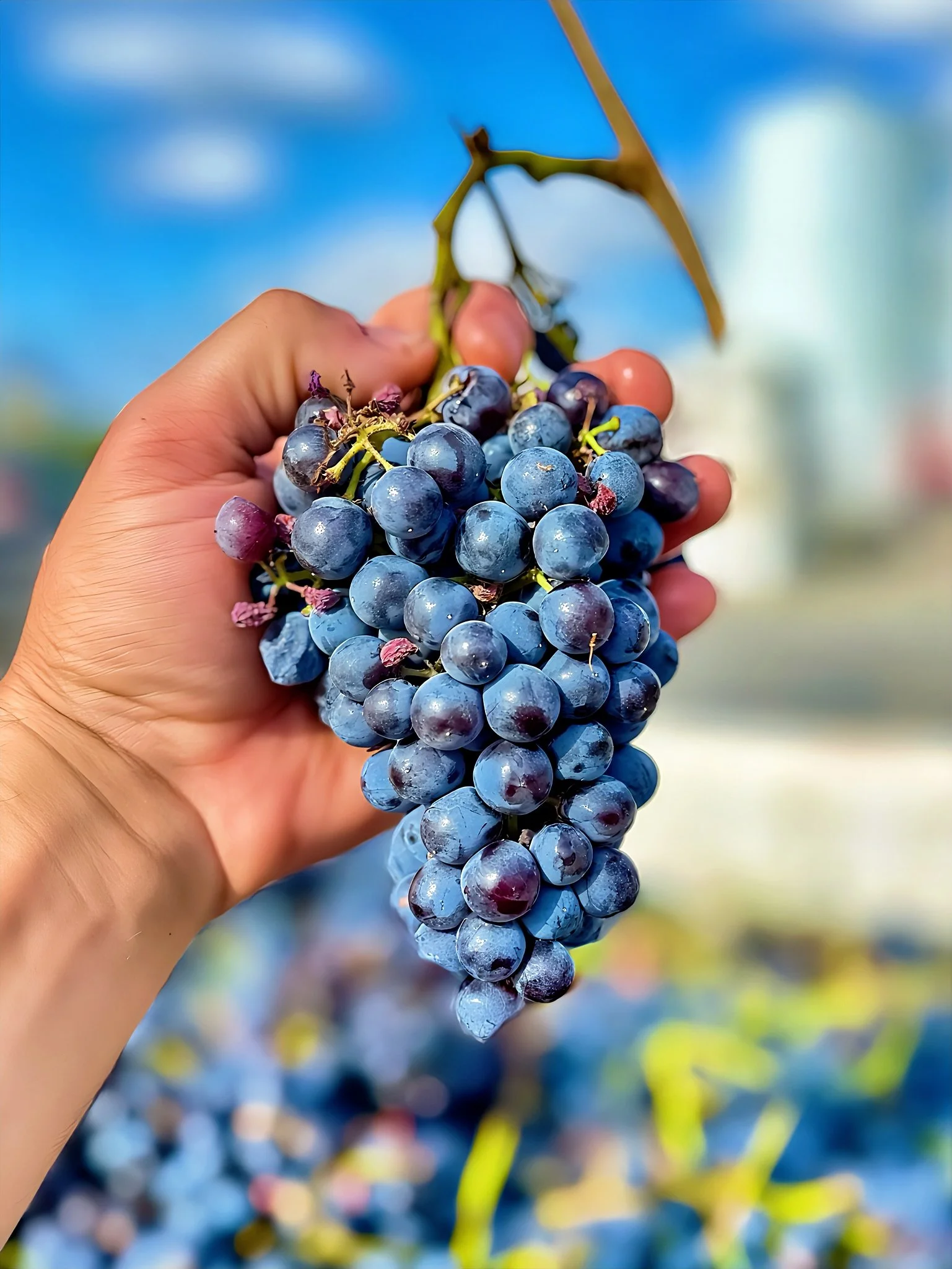
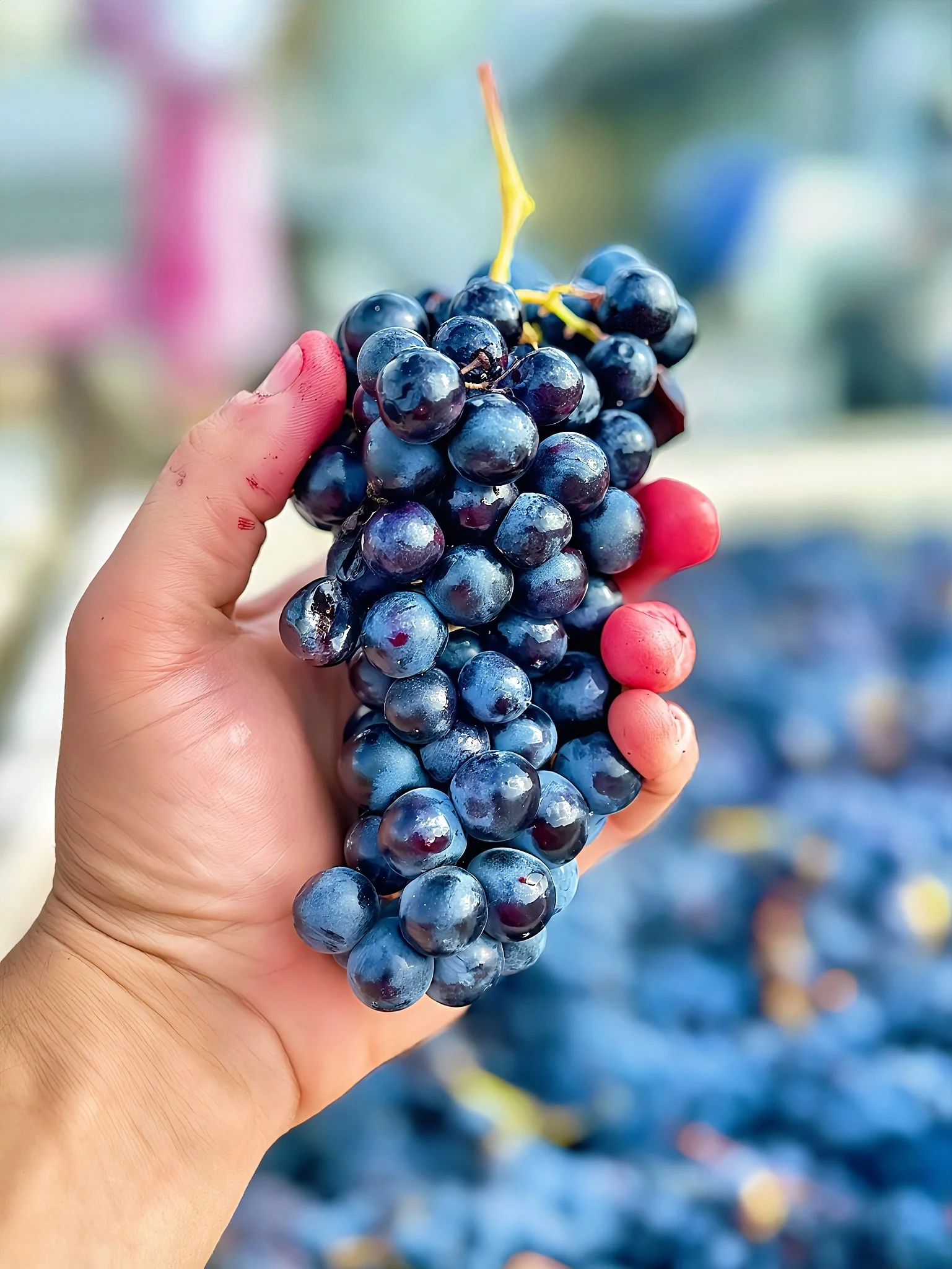
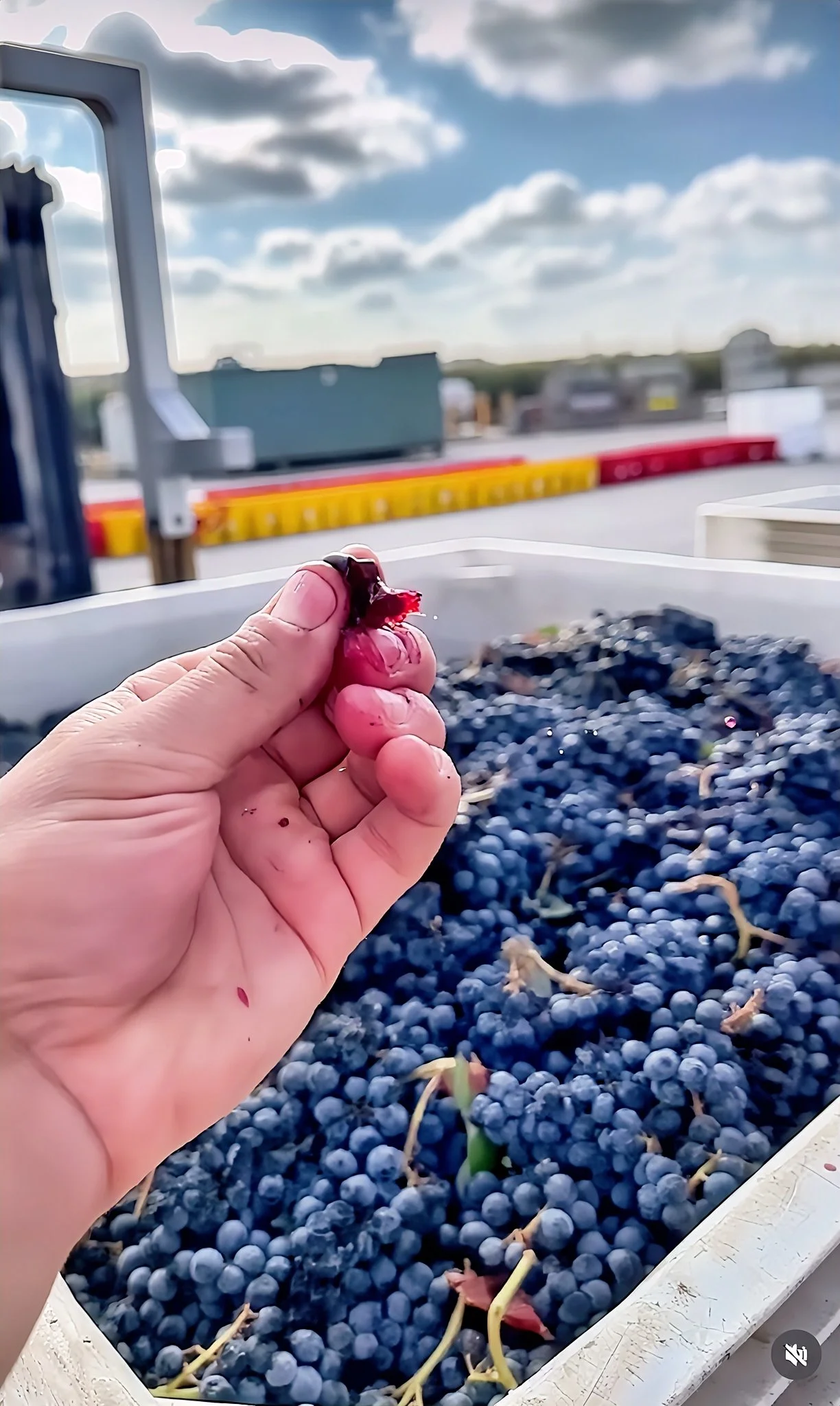
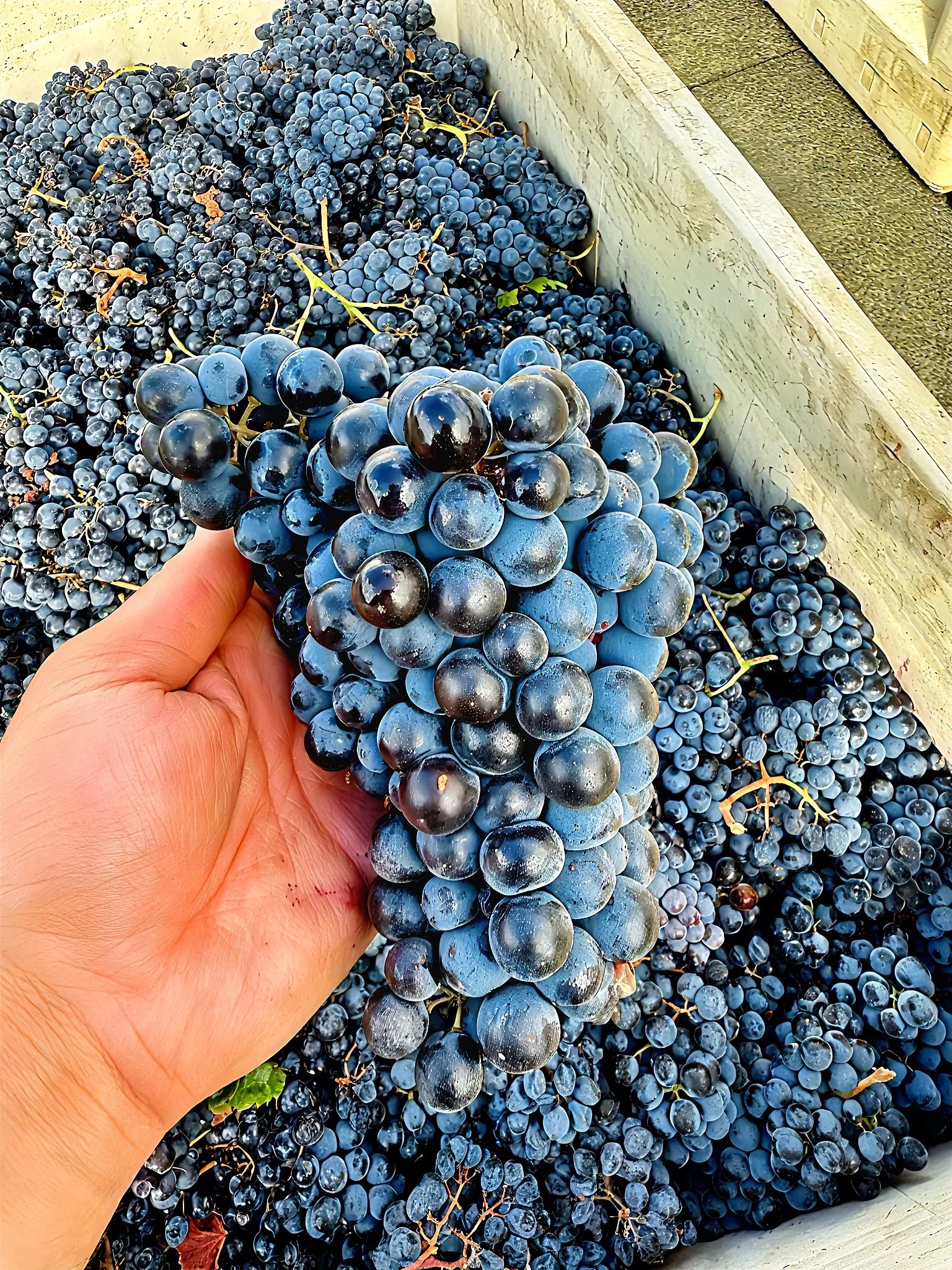

Each pail includes 5 gallons of grape must
Product will arrive partially frozen.
Rutherford AVA, Napa Valley, CA
Brix: 27.0 , pH: 3.64 , TA: 3.5 , YAN: 99 mg/L
(Full ETS Lab Report in photos)
Harvested and destemmed: TBD
2025 Alsace Vineyard Merlot
A Rare Expression from Rutherford’s Alsace Vineyard
Just north of Oakville and bordering the Silverado Trail, Alsace Vineyard lies within one of Rutherford’s most prized corridors of red and brown gravelly loam. These well-drained soils and optimal sun exposure yield fruit that balances power with precision — the hallmark of this legendary AVA.
Under the meticulous care of Garvey Vineyard Management, the 2019-planted Clone 15 Merlot ripens evenly, developing deep tones of plum, blackberry, and earthy spice while maintaining freshness and structure. The result is a modern, poised expression of Rutherford Merlot — rich in character yet refined in texture.
Renowned among Napa insiders, Alsace Vineyard has produced wines earning up to 99 points (Wine Spectator) and 97 points (Robert Parker), cementing its reputation as one of the region’s elite sites. Here, warm afternoon sun, cool nighttime air, and the area’s distinctive “dusty” minerality converge to craft fruit with depth, elegance, and unmistakable Rutherford pedigree.
Flavor Profile & Winemaking Potential
The berries are loaded with dark fruit and plum, blackberry, and black cherry flavors, supported by classic earth and spice notes. For Merlot, the fruit shows an unusually vivid, spicy character that adds complexity without losing balance.
Expect excellent tannic structure and enough natural acidity to produce wines with richness, grip, and age-worthy depth — ideal for winemakers seeking a bold yet refined Rutherford Merlot.
Highlights
Vineyard: Alsace Vineyard, Rutherford AVA, Napa Valley
Varietal: Merlot (Clone 15)
Planted: 2019
Soils: Red and brown gravelly loam with excellent drainage
Farming: Sustainable and fish-friendly, managed by Garvey Vineyard Management
Flavor potential: Plum, blackberry, spice, herbs, earth, and long fine-tannin finish
Retail comparison: Finished wines from this vineyard have earned up to 99 points (Wine Spectator) and 97 points (Robert Parker)
Extremely limited. Singular to Rutherford.
Provenance Note: This product is made from fruit sourced from Alsace Vineyard in Rutherford, Napa Valley. The vineyard name is used here for factual origin reference only and does not imply endorsement or affiliation.